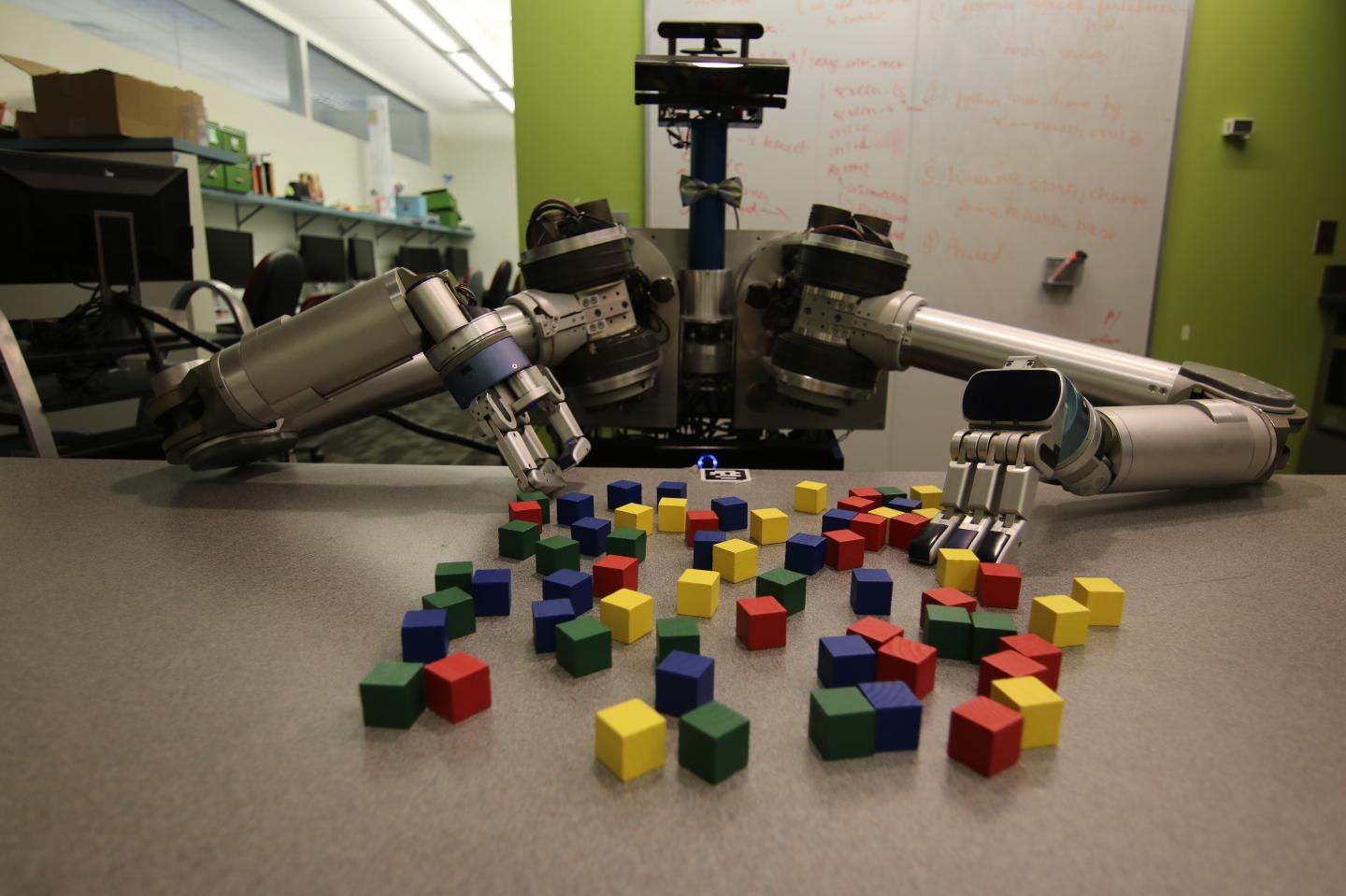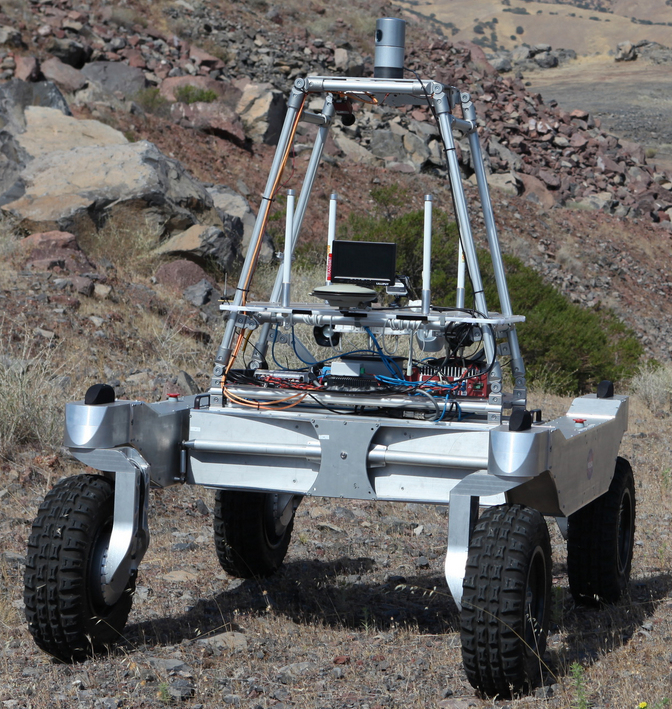Robots learn to cut through clutter
May 20, 2016

New software developed by Carnegie Mellon University helps mobile robots deal efficiently with clutter, whether it is in the back of a refrigerator or on the surface of the moon. (credit: Carnegie Mellon University Personal Robotics Lab)
Carnegie Mellon University roboticists have developed an algorithm that helps robots cope with a cluttered world.
Robots are adept at picking up an object in a specified place (such as in a factory assembly line) and putting it down at another specified place (known as “pick-and-place,” or P&P, processes). But homes and other planets, for example, are a special challenge for robots.
When a person reaches for a milk carton in a refrigerator, he doesn’t necessarily move every other item out of the way. Rather, a person might move an item or two, while shoving others out of the way as the carton is pulled out.
Robot creativity

Robot employs a “push and shove” method (credit: Jennifer E. King et al./Proceedings of IEEE International Conference on Robotics and Automation)
In tests, the new “push and shove” algorithm helped a robot deal efficiently with clutter, but surprisingly, it also revealed the robot’s creativity in solving problems.
“It was exploiting sort of superhuman capabilities,” Siddhartha Srinivasa, associate professor of robotics, said of his lab’s two-armed mobile robot, the Home Exploring Robot Butler, or HERB. “The robot’s wrist has a 270-degree range, which led to behaviors we didn’t expect. Sometimes, we’re blinded by our own anthropomorphism.”
In one case, the robot used the crook of its arm to cradle an object to be moved. “We never taught it that,” Srinivasa said.

K-Rex rover prototype (credit: NASA)
The new algorithm was also tested on NASA’s KRex robot, which is being designed to traverse the lunar surface. While HERB focused on clutter typical of a home, KRex used the software to find traversable paths across an obstacle-filled landscape while pushing an object.
A “rearrangement planner” automatically finds a balance between the two strategies (pick-and-place vs. push-and-shove), Srinivasa said, based on the robot’s progress on its task. The robot is programmed to understand the basic physics of its world, so it has some idea of what can be pushed, lifted, or stepped on. And it can be taught to pay attention to items that might be valuable or delicate.
They researchers presented their work last week (May 19) at the IEEE International Conference on Robotics and Automation in Stockholm, Sweden. NASA, the National Science Foundation, Toyota Motor Engineering and Manufacturing, and the Office of Naval Research supported this research.
Abstract of Rearrangement Planning Using Object-Centric and Robot-Centric Action Spaces
This paper addresses the problem of rearrangement planning, i.e. to find a feasible trajectory for a robot that must interact with multiple objects in order to achieve a goal. We propose a planner to solve the rearrangement planning problem by considering two different types of actions: robot-centric and object-centric. Object-centric actions guide the planner to perform specific actions on specific objects. Robot-centric actions move the robot without object relevant intent, easily allowing simultaneous object contact and whole arm interaction. We formulate a hybrid planner that uses both action types. We evaluate the planner on tasks for a mobile robot and a household manipulator.